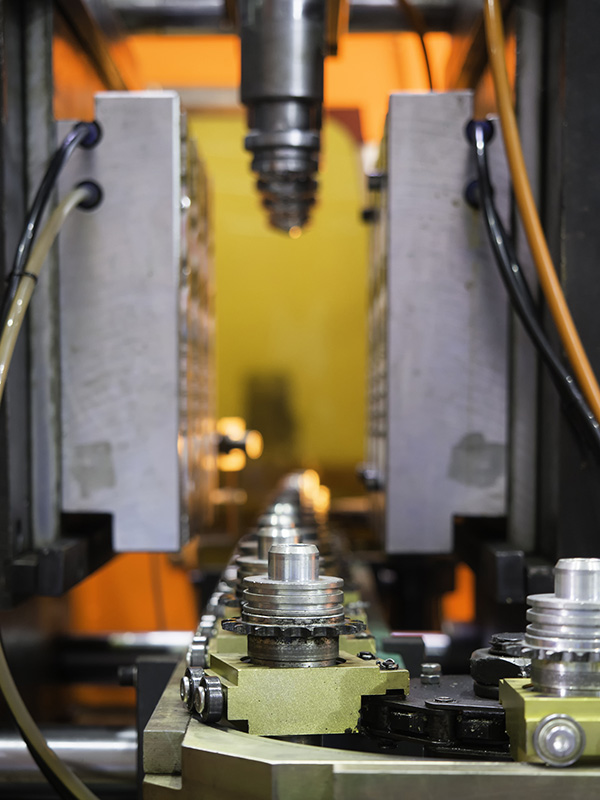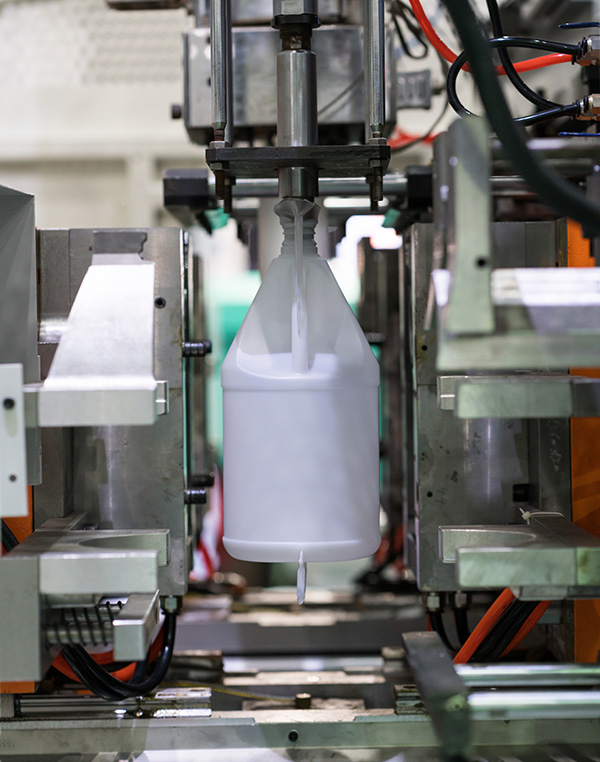Have you ever wondered how the jar your facial moisturizing product is put into got its shape? Do you know how the bottle you’re drinking juice from was made?
Many times these plastic bottles, jars and other containers you package your goods in were created by a common process called extrusion blow molding.
What is Extrusion Blow Molding?
Extrusion blow molding, or EBM, is a manufacturing process where plastic pellets are first melted in an extruder and then expelled into a hollow tube called a parison. The barrel of the extruder helps hold the raw materials being manufactured, and screws help mix the material inside.
The typical resins used in the extrusion blow molding process include:
- HDPE
- LDPE
- PP
- PVC
- ePET
- PETG &
- “Soft Touch” Resins

Many bottles and jars, whether they are single layer or multi-layer, are produced through this process. Chances are; if you’ve ever seen pasta being made, you’ve seen an extruder working! It’s the exact same concept.
We’ll dig a little deeper into the actual process soon, but for now, let’s go over some important definitions that apply to the extrusion blow molding process.
Important Process Definitions
Mold
A mold is an assembly that can include one or more cavities.
Cavity
A cavity is the individual molding surface that will produce a single blow-molded part. Cavitation is driven by the quantity of product needed, as well as the size of the container being molded.
Parison
Parisons are the hollow plastic “tubes” formed by extruding molten material through a die head.
Blow Pin
The blow pin is a tooling component that’s introduced into the mold and molten parison in order to blow the compressed air. The blow pin tip also helps form the neck by either the force of the compressed air or the mere compression force of the blow pin against the material (and the neck finish of the mold), depending upon the type of molding machine process being used.
Flash
A flash is the excess material that extends from the mold.
How Does Extrusion Blow Molding Work?

In order to produce the many single or multi-layer bottles and jars you package your products in or even use every day, the process first starts with the plastic pellets we mentioned earlier.
The Extrusion Blow Molding Process Broken Into 5 Steps
- The extruder turns each plastic pellet into a molten material with the help of a heated barrel and sheer force. Both temperature (frictional and external heat are used) and pressure melt the plastic.
- The material is then moved through the extrusion tooling to create a parison.
- In order to be captured, the parison is closed into a water-cooled mold.
- Next, compressed air is blown into the parison. This blown air inflates the parison into the exact shape of the mold cavity, thus forming a hollow bottle, container, or part. If you’ve ever seen glassblowing, it’s very much like that.
- After the plastic has cooled enough, the mold is opened and the part or product is taken out!
It’s all pretty simple, right?
If you have any questions, or would like to use MJS Packaging as your preferred packaging solutions provider, please don’t hesitate to contact us!
We’re always available during normal business hours and we guarantee the MJS Packaging team will address your packaging needs with unmatched experience and a well-rounded approach.




